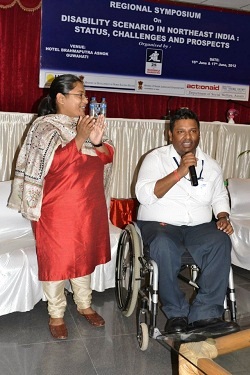Meenakshi Goswami, teacher and writer, Tezpur, Assam (sent 7 July 2013)
How far will the Look East Policy of Government of India help the common people of Northeast, particularly Assam?
Sudeep Chakravarti: Dear Ms Goswami, I am of the opinion that Government of India has for a long time had two policies for its far eastern geography: Look East Policy, and Overlook North East Policy.
You cannot have an effective Look East Policy if you overlook the North East. I firmly believe (and I have mentioned it earlier at thethumbprintmag.com) that the North East should be an integral part of India’s foreign policy as much as its domestic policymaking. In the long term, India cannot develop a deep-rooted and meaningful relationship with South East Asia without ensuring the gateway—North East India—is developed socio-economically and with infrastructure of every sort, from health and education to road/rail networks and adequate electricity. And we must not forget the greatest infrastructure of all: peace and stability.
Having said this, I firmly believe the Look East Policy can definitely help the North East, by opening up avenues of commercial and cultural interaction with South East Asia. Already, greater attention is being paid to Manipur—because of India’s larger interests in Myanmar. This is a cynical approach by Government of India, but at least it may bring benefits to Manipur, in terms of eventual peace and prosperity.
How can common people benefit? See what has happened in the ASEAN region. By becoming more integrated, many so-called common people in Thailand, Indonesia, Vietnam, Lao and Cambodia have directly benefited from job opportunities (by producing goods of all kinds for export within ASEAN and outside, from tourism, and from joint ventures) that have come from its relatively more prosperous partners such as Singapore, Malaysia and Brunei. Workers from many of these countries are also employed in the wealthier ASEAN nations.
Assam lies on the way from India to ASEAN—using the gateway of Myanmar, which is trying very hard to establish peace with various warring factions, and also develop its economy. Any place that on this route has the potential to benefit, in the long term, from an association with ASEAN. (So, perhaps, it may be better, from the point of view of Assam and North East India in general, to call this a Look ASEAN policy, as that is the most immediate region to the east). I believe if peace settles on Myanmar, it will have a direct effect on Manipur and Nagaland; and it may also have the effect of opening up links with southern China. This can only be to the good.
Find us on facebook: facebook.com/TheThumbPrintMag
(If you have questions for Sudeep Chakravarti, mail them to editor.ttpmag@gmail.com)
Also read:







































